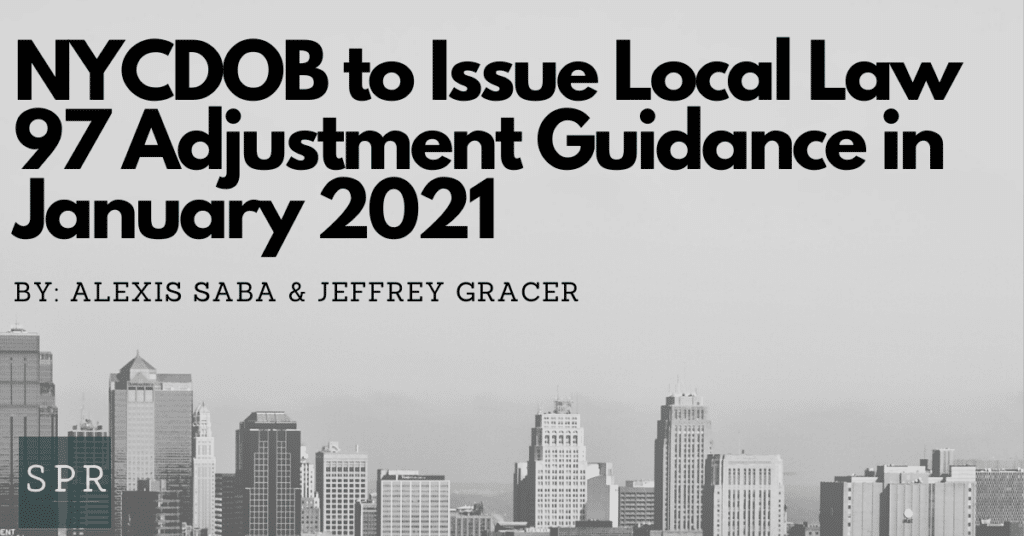Blog

NYCDOB to Issue Local Law 97 Adjustment Guidance in January 2021
Gina Bocra, the Chief Sustainability Officer for the New York City Department of Buildings (NYCDOB), recently announced that in January 2021, the agency expects to issue guidance on the process for obtaining an adjustment to buildings’ greenhouse gas emissions caps under Local Law 97 of 2019 (as amended through Local Law 147 of 2019). Such adjustments will be a critical component of building owners’ strategies to meet the first compliance deadline in 2024.
Building owners must apply for two of the four available adjustments by July 2021: energy-intensive uses and nonprofit hospitals. Local Law 97 does not specify an application deadline for the other two adjustments: landmark status/physical constraints and financial hardship. Based on the information provided in Local Law 97, all applications must be certified by a licensed engineer or architect, and many must be supported by a detailed analysis of technical, financial and legal information.
Potentially one of the most widely applicable adjustments is for buildings with energy intensive uses that may not be able to meet the 2024 cap. This adjustment would allow a building owner to reduce building emissions to 70 percent of 2018 emissions rather than meet the cap applicable to that building in 2024. To obtain the adjustment, a building owner must demonstrate the following in its adjustment application:
- In 2018, the building’s emissions exceeded its 2024 cap by over 40 percent;
- Exceedance of the 2024 cap must be the result of energy-intensive uses such as 24-hour operations, health and safety operations, high density occupancy, or energy-intensive communications or industrial operations;
- The building energy performance meets the 2015 New York City energy codes; and
- The building owner has formulated a plan to reach full compliance with the 2030 cap.
Preparing an adjustment application that satisfies these criteria will take time, expert analysis and thorough supporting documentation. Applicants will need to make a defensible argument to NYCDOB as to why a building’s uses are “energy-intensive” and why the plan set forth in the application can be expected to comply with the 2030 cap (or if not, why such compliance is unattainable). NYCDOB’s forthcoming guidance may indicate how these criteria will be applied, and it may also provide some insights into the type of analysis and documentation desired by the Department.
Despite uncertainty in the real estate market and building energy use caused by COVID-19, it is clear that NYCDOB, the Mayor’s Office of Sustainability and the empaneled Advisory Board and working groups are moving forward with Local Law 97 implementation. NYCDOB’s guidance will be an important step in this process.